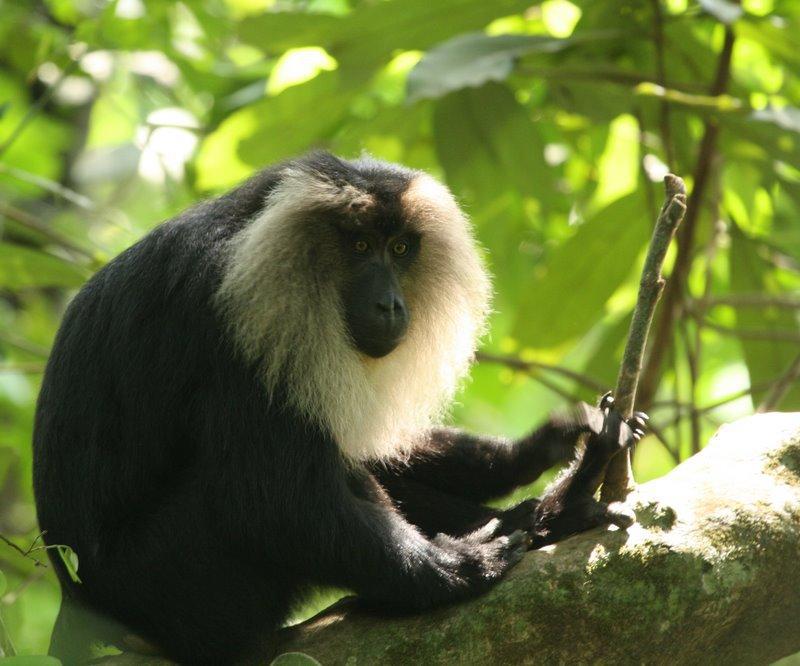Honnavalli N Kumara
Other projects
20 Jul 2005
Impact of Local Hunting on Abundance of Large Mammals in Three Protected Areas of the Western Ghats, Karnataka
15 Nov 2007
Development of a Conservation Strategy for a Newly Discovered Lion-Tailed Macaque Macaca silenus Population in Western Ghats, India
An assessment of NTFP species availability in the region, a study to develop a model for sustainable harvest of Uppage and its impact on stand structure, regeneration and its management for the forest managers.

Lion-tailed macaque.
Forests of Sirsi-Honnavara over the last decade has seen a rapid decline in the vegetation cover of estimated yearly loss of 1.9%, in which largest population of LTM was first identified in 2002 and reconfirmed and marked the boundaries to develop as protected area in 2008. As a result of this is Aghanashini Lion-tailed macaque Conservation reserve (ACR).
Second phase of work suggest an overlap in utilization of resource by both monkeys and man. Out of the 13 NTFP collected by people, nine of them are food of LTM of which Garcinia gummi-gutta (Uppage) is the most widely extracted NTFP by all sections of the society. Uppage is the most important food item in the wet season for the LTM as it constituted 16.41% and contributes 7.14% in its overall diet. Although the phenophases preferred by both monkeys and man is ripe fruits, but increase in demand, unstable market has resulted in early harvest and destructive harvesting practices. The fruit is collected and rind is dried in fire wood ovens for 24 hours. The large quantities of fire wood are being used to dry them. Local market fell dramatically, as a result of substandard quality of rind and fall of international market for the drug produced from the Uppage.
Forest Department (FD) auctions the right to extraction and trade to private contractors who play a major role in ensuring and fixing a cheaper rate to the harvester that has decreased the quality by adulteration ensuring their higher profits. FD had outlined a set of objectives for NTFP use and management but its ground level implementation has never picked up. The attempt to nullify the role of middle men and alternatively installing a governing body with all stake holders as members to scrutinize proper, timely harvest and direct sale to the factory would ensure higher benefits to the harvester. An attempt to minimise the fuel wood consumption and thus have minimum impact on forests, ensuring sustainability of the resource and availability to LTM would ensure long term survival of the species.